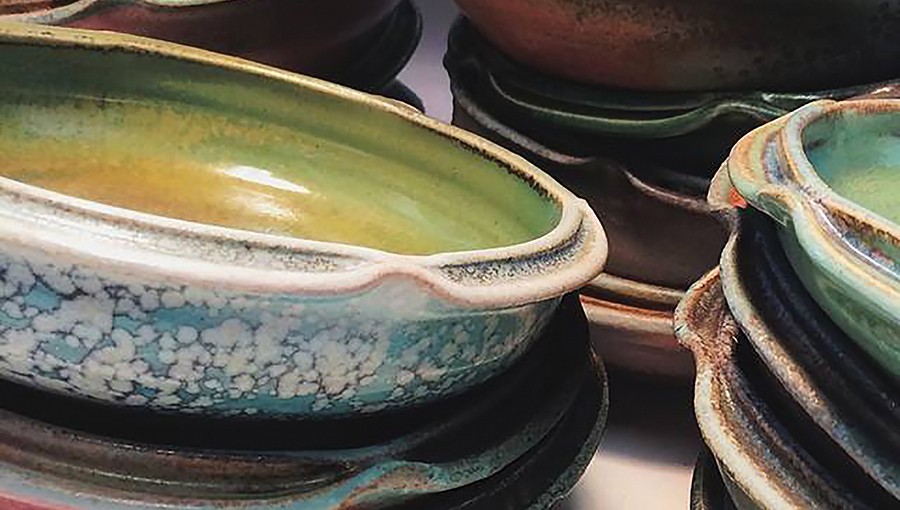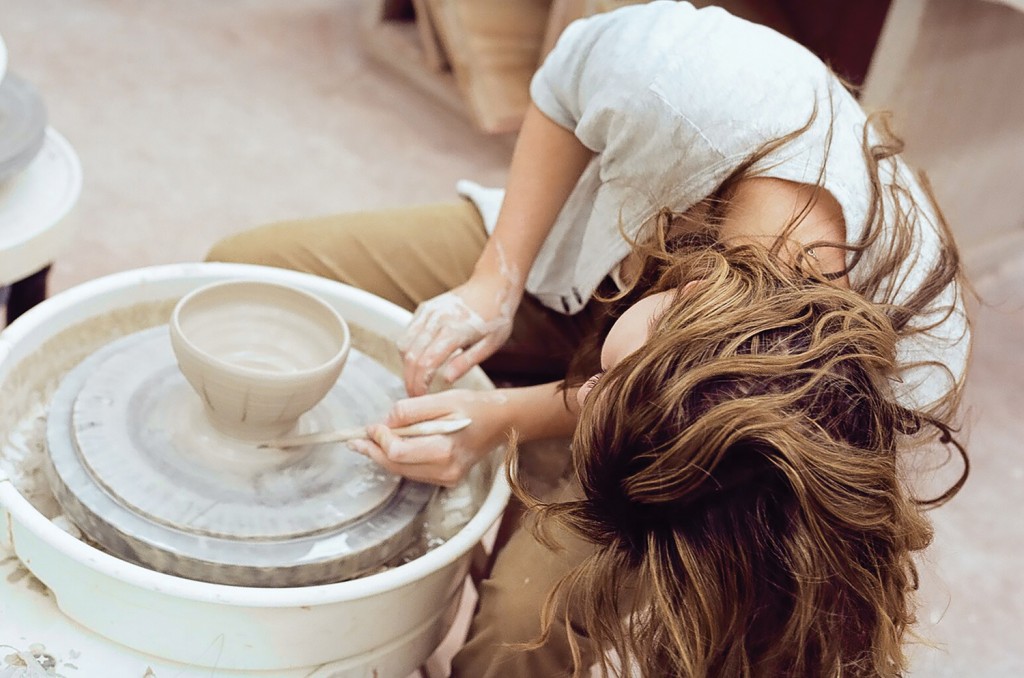bring the audience to the artists
by Jemma Everyhope-Roser
Community-supported art gives students a taste of the marketplace.
Damp clay and the baked-earth scent of a fired-up kiln. Bowls, mugs, vases, and a few globular sculptures stacked, variations on a theme. The grind of the pottery wheel. The lap of water. Glaze glistens in the pale light.
Valerie Zimany, faculty leader of the Creative Inquiry team that uses this space full of artworks in progress, describes her department as small but great. It has strong grassroots support, but the campus itself is far from a larger, more metropolitan arts scene, such as the ones in Atlanta, Asheville, or Charleston. But Zimany, not about to let that stop her from helping her students, decided to bring the experts, and the audience, to the artists.
That’s how Clemson’s Community Supported Art (abbreviated to CSArt, much like the community supported agriculture model it’s based on) was born, from the fertile earths of the ceramics department.
Together, Zimany and the students select a juror—a key feature of the CSArt process. The juror brings expertise, an audience, and access to the wider arts community. So far the jurors (Harriett Green, the visual arts director of the South Carolina State Arts Commission; Alan Ethridge, executive director of the Metropolitan Arts Council of Greenville; and, for the coming season, Stephanie Moore, the executive director of the Center for Craft Creativity and Design in Asheville) have fit the bill and then some.
Samples and selections
Drafting an invitation letter, the students set up a speaking event for the juror. A theme is selected and a call goes out to art majors and minors. Students respond, sending proposals and samples.
Then the juror selects the artists, not only for the quality of the work but also for how the work functions together as a curated group. The juror’s selection is then offered in limited edition, and interested community members and collectors purchase a “share” in the seasonal artist “crop,” in order to receive a crate of fresh, local artwork in return at the semester-ending pickup event.
Then, over the course of the semester, blogging and video lets shareholders in on the artists’ processes.
“People desire to know where things are coming from, how it is happening, and why,” says Lindsey Elsey, a grad student and juried artist who produces functional porcelain.
Learning the business
The Creative Inquiry students learn a variety of professional skills such as web design, blogging, video editing, logo design, and social media marketing. Allison Rupprecht, a Creative Inquiry team member and juried artist who works with slip-cast porcelain, says, “It’s really given me a lot of professional experience with emailing people, talking to shareholders, different processes that I’m going to have to use when I’m in the workforce.”
And that, according to Zimany, is part of the point.
“Studio courses focus on technical skills and artistic voice, but there was a gap of knowledge regarding professional skills such as marketing and building audiences,” Zimany says.
As the pick-up event nears, juried artists labor. Each of the twenty-five pieces (one made for each available share) must be “of a similar spirit and quality to one another,” Elsey says. This, Zimany explains, “pushes their studio practice, allowing students to dig in and refine a skill,” and, she adds, working under a deadline to meet shareholder expectations can be “stressful, in a positive way.”
“I want people to know how hard the team members work,” Rupprecht says, “and how truly passionate we are about this project. It means so much to us, so we really appreciate the community support.”
An exhibition of CSArt artwork over the last three semesters is on view outside the Gunnin Architectural Library, October 19 to December 18, 2015. A pop-up exhibition of the Fall 2015 season will be featured in the Acorn Gallery of Lee Hall from November 12 to 20, 2015. The shareholder pickup event is scheduled for the evening of November 12.
For more about the CSArt program, go to www.clemson-csa.org/. The Annual Bowl Sale is scheduled for November 18, 2015, and the Ceramic Studio Sale for the spring. All proceeds support student professional opportunities.
Valerie Zimany is an assistant professor of art in the College of Art, Architecture, and Humanities. Allison Rupprecht is a psychology major, art minor. Lindsey Elsey is a graduate student in the visual arts. Jemma Everyhope-Roser is the assistant editor for Glimpse.




